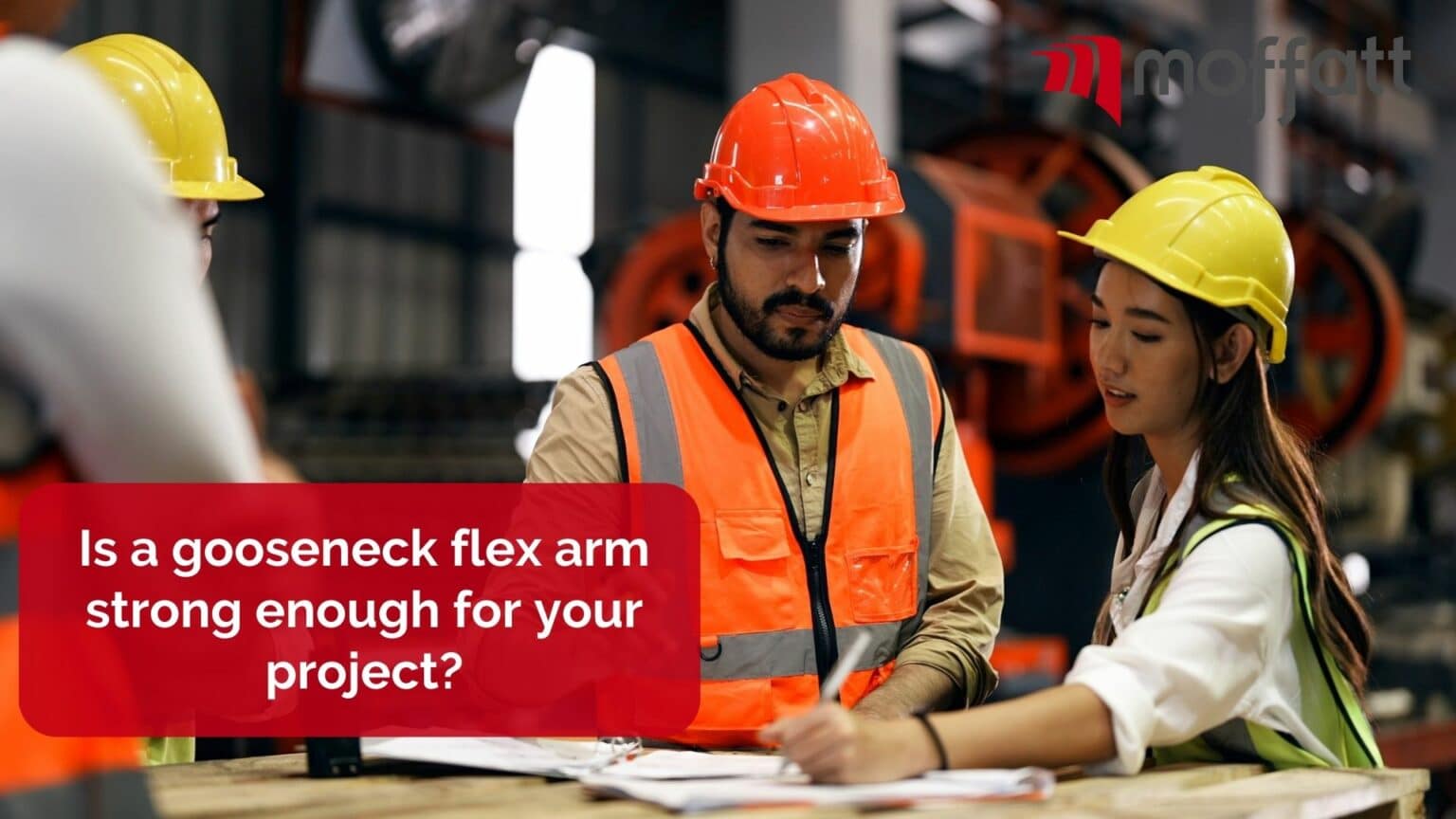Do all gooseneck flex arms work the same way?

Share:
Unlike some things, all flex arms AREN’T created equal. Here’s what you need to look for
One of the hardest things about our product is people coming in with assumptions about how well a flex arm works. Now, we don’t like to speak badly on other products, but for the most part those assumptions are usually born from working with an inferior-grade flex arm product. While we can’t speak to another manufacturer’s process, we can point out some things that should give you pause – and what a better flex arm might offer you.
What is a Flex arm?
Some of the confusion comes from several different devices falling within the “flex arm” name. Basically, any device that holds its shape once you bend it. Unfortunately, not all of these are created equally. And the construction methods of some leave a lot to be desired.
Solid core aluminum rod flex arms often experience critical failure
We’ve seen sold core aluminum rods used as the internal of some flex arm products. This can lead to tons of problems since it’s not using the mechanism of a spring coil to create the tension needed to support the weight of a payload. We recently tried using one of these types of flex arms that we bought off the internet as a phone holder – it snapped right away. While some of these MAY be able to hold some weight, their ability to be adjusted is severely hampered because of the construction of the device. The tradeoff between strength at the bottom, and ease of use at the top is just too great because of the continuous, homogenous material.
Spring coiled goose neck flex arms
Instead of a bendable homogenous material, spring coiled goose neck flex arms rely on engineering to create the smooth but supple flex that makes them different from their solid core counterparts. When someone picks up a quality gooseneck, it’s easy to see that these are a higher quality feel. So how do you know?
How to spot a good spring coil gooseneck flex arm
It’s funny, some of the tests that you might perform on a flex arm, at least initially, probably feel similar to the “tests” you run when picking out produce at the grocery store. You’ll want to pick it up, feel it, and make some adjustments so that you know what you have. A quality flex arm will have a pleasant, smooth feel to it. That doesn’t just mean Moffatt flex arms, ANY quality flex arm should feel that way.
It’s hard to explain, but it should feel ‘nice’ to bend it – smooth and easy to adjust. A poorly made flex arm will often feel like it’s jumping inbetween the joints as you bend it. While a well made flex arm will still produce a bit of noise (unless you specifically design it not to, which we can), the differences with a poorly made flex arm will feel obvious.
Material matters: Why brass and steel together make for the strongest flex arm
We’ve experimented a lot with materials, and one thing we’ve found is that using different materials between the spring wire and wrapping can be a boon to increasing the strength of a flex arm. In fact, while we’ve seen both steel and brass lose a bit of strength over the lifetime of a product, brass, and steel may actually increase in strength as they are broken in.
What is springback, how does it happen, and how do I avoid it?
Sometimes a flex arm can experience something called spring back. That’s when the arm is over-bent in one direction so that the wrapping triangle inside the flex arm is deformed, leaving only the spring wire. When this happens, a flex arm will always want to return to the shape it was in when it was overbent.
That can be a huge problem if you need a flex arm to stay in place – and we’re guessing you do. In most cases, if you use a flex arm try not to overbend or bend too fast which can create the kind of compromises that make spring back happen. That said, in most cases using a flex arm normally won’t cause these problems. (We know, because they survive cycle tests of 50k – 200k bends normally)
General advice for flex arm users
- Don’t immediately test the limit out of the box
- Slow and steady is the best way to adjust
- If the resistance increases, that’s the end feel. Be prepared to stop
- Erratic adjustment is the enemy of a flex arm
Going with a professional-level flex arm is the best way to avoid failure
Gooseneck flex arms are a product unto themselves, which means there aren’t many other devices to compare them to. Sure, in some industries they’re ubiquitous (microphones, lamps, etc), but for someone like a medical device manufacturer, they may not understand the unique capabilities before they get one in their hand.
For us, we don’t skimp on materials. We take the strongest and best performing starting product, then add value and customization so it’s a viable solution for your device. It’s not disposable, and that means we don’t compete with other options on commodity pricing – because you’re not getting commodity quality, you’re getting professional quality.
The flex arm challenge
If you’re feeling like a flex arm might not have the strength for your job, we challenge you to first try one. Give us a call, tell us your project, and we’ll send you samples free of charge. We think you’ll be surprised at what you find.
